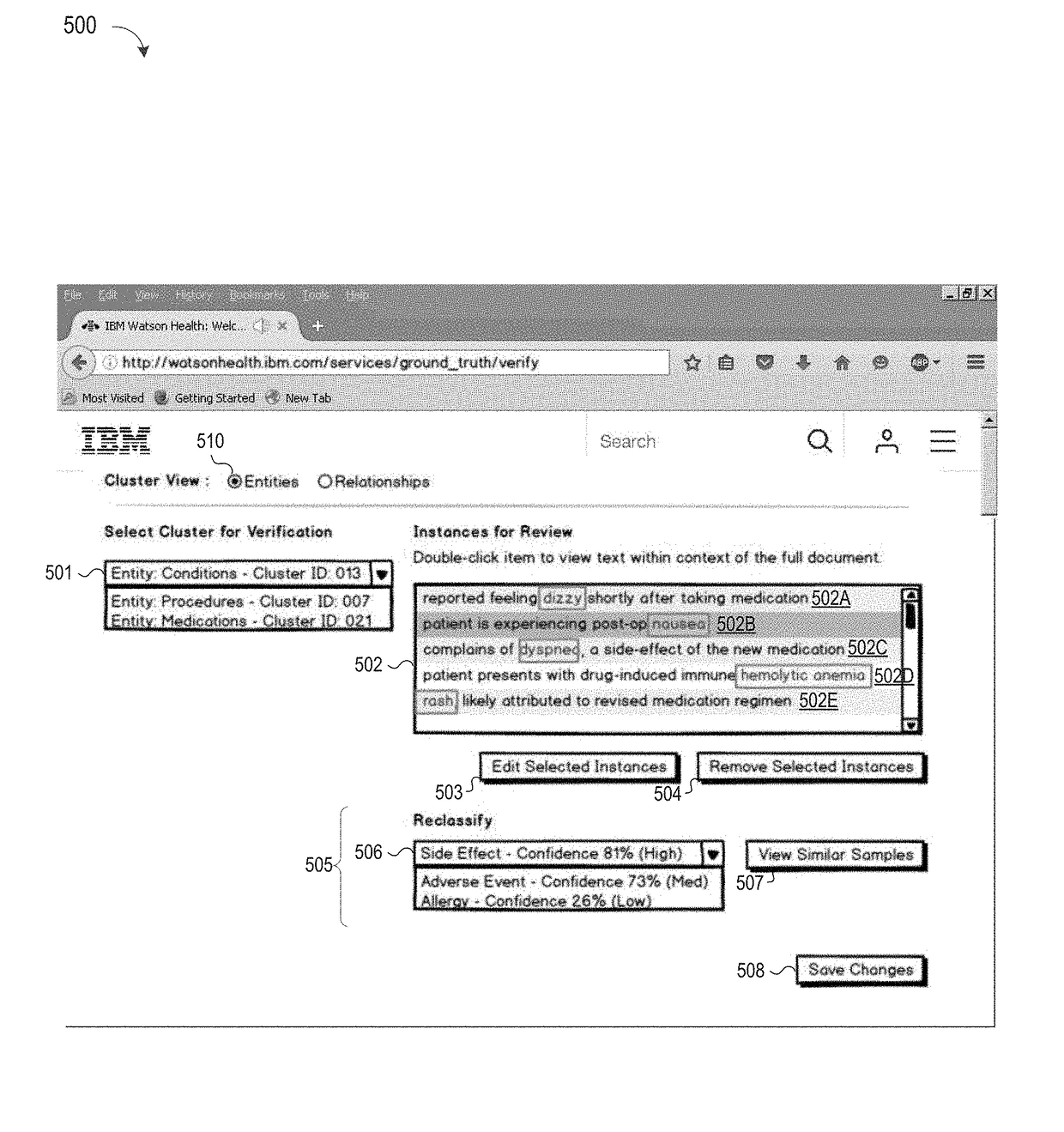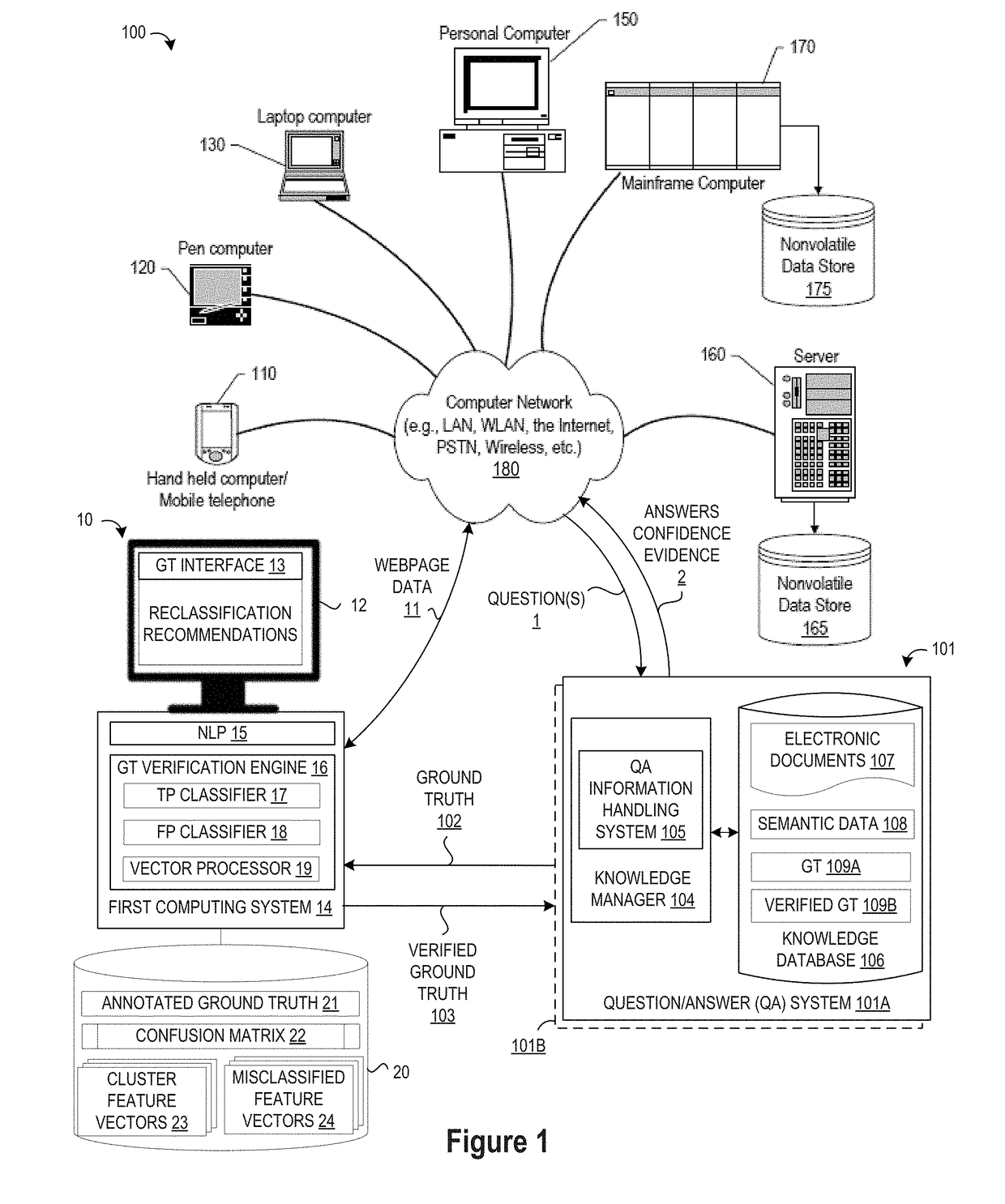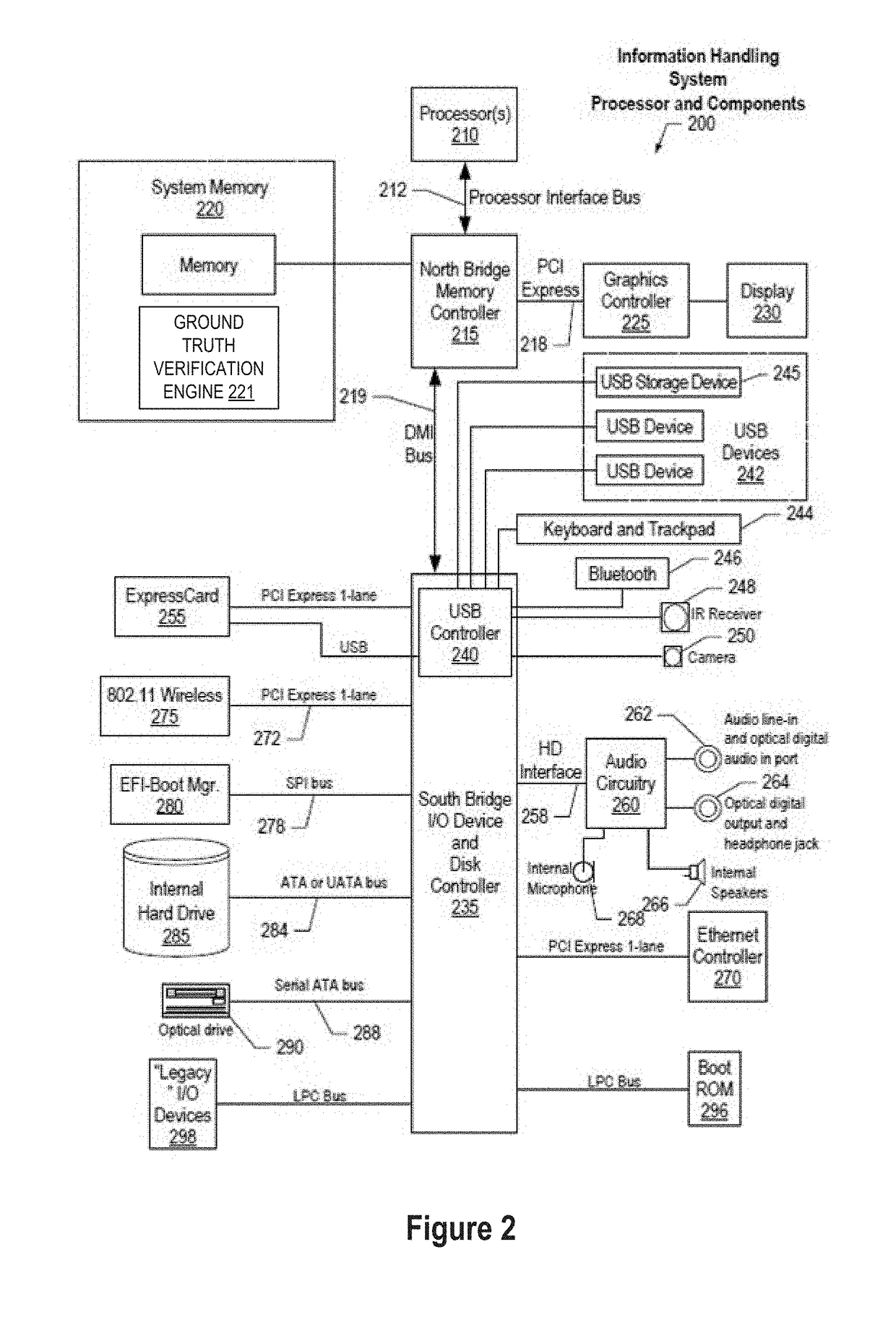System and Method of Advising Human Verification of Often-Confused Class Predictions
a human verification and class prediction technology, applied in the field of artificial intelligence computer systems, can solve the problems of inability to verify the accuracy of the sme's validation work, the difficulty of collecting ground truth data, and the inability to accurately identify the ground truth, so as to expedite the verification of the ground truth. the effect of quick and efficient identification
- Summary
- Abstract
- Description
- Claims
- Application Information
AI Technical Summary
Benefits of technology
Problems solved by technology
Method used
Image
Examples
Embodiment Construction
[0010]The present invention may be a system, a method, and / or a computer program product. In addition, selected aspects of the present invention may take the form of an entirely hardware embodiment, an entirely software embodiment (including firmware, resident software, micro-code, etc.), or an embodiment combining software and / or hardware aspects that may all generally be referred to herein as a “circuit,”“module” or “system.” Furthermore, aspects of the present invention may take the form of computer program product embodied in a computer readable storage medium or media having computer readable program instructions thereon for causing a processor to carry out aspects of the present invention. Thus embodied, the disclosed system, a method, and / or a computer program product is operative to improve the functionality and operation of a cognitive question answering (QA) systems by efficiently providing ground truth data for improved training and evaluation of cognitive QA systems.
[001...
PUM
 Login to View More
Login to View More Abstract
Description
Claims
Application Information
 Login to View More
Login to View More - R&D
- Intellectual Property
- Life Sciences
- Materials
- Tech Scout
- Unparalleled Data Quality
- Higher Quality Content
- 60% Fewer Hallucinations
Browse by: Latest US Patents, China's latest patents, Technical Efficacy Thesaurus, Application Domain, Technology Topic, Popular Technical Reports.
© 2025 PatSnap. All rights reserved.Legal|Privacy policy|Modern Slavery Act Transparency Statement|Sitemap|About US| Contact US: help@patsnap.com



